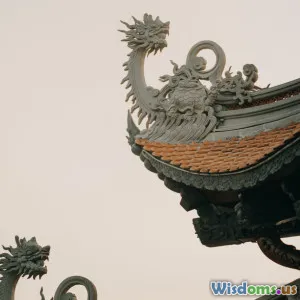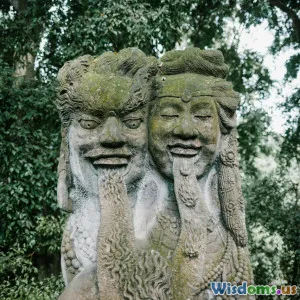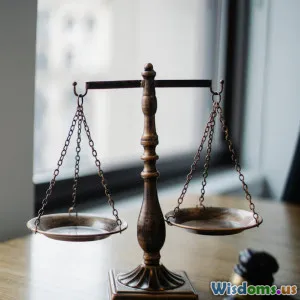
Why Dragons Appear in Almost Every Ancient Culture Explained
8 min read Explore why dragons appear in nearly every ancient culture, revealing shared human fears, symbolism, and storytelling traditions. (0 Reviews)
Why Dragons Appear in Almost Every Ancient Culture Explained
Dragons have enthralled human imagination for millennia. From the floodplains of Mesopotamia to the forests of Europe, and the mountains of Asia, dragons appear as formidable beasts, divine protectors, or cosmic forces. But why do these mythical creatures emerge with such consistency across unrelated ancient civilizations? This article explores the compelling reasons behind the universal presence of dragons in mythology, analyzing their symbolic significance, psychological roots, and cultural patterns.
The Ubiquity of Dragons in Ancient Mythology
Dragon-like creatures have surfaced independently in countless cultures, including:
- Ancient China: The "Long" dragon symbolizes power, authority, and auspiciousness, often associated with rivers, rain, and the emperor.
- Mesopotamia: The Babylonian "Tiamat" dragon embodies chaos and primordial waters; Marduk's myth involves slaying her to create the world.
- Europe: Dragons are frequently portrayed as evil, hoarding treasure and opposing heroes (e.g., the tale of Saint George).
- Mesoamerica: The Aztec "Quetzalcoatl" depicts a feathered serpent blending serpent and bird traits.
- India: The "Naga" serpents are both divine protectors and sometimes threatening entities.
These examples demonstrate dragons’ diverse manifestations—from benevolent to malevolent, celestial to earthly—yet their engulfing prominence sparks curiosity about their origin.
Why Dragons? Key Theories Explaining Their Cross-Cultural Presence
1. Psychological Archetype and Human Fear
Carl Jung proposed archetypes—universal symbols embedded in the collective unconscious. Dragons frequently embody the shadow archetype: mysterious, dangerous forces lurking on the periphery of human awareness.
In primitive times, humans faced numerous perils: venomous snakes, large predatory animals, natural disasters. Dragons as composite monsters—part reptile, part bird or mammal—may personify these diffuse fears, a fusion of threats into a singular mythical beast.
Supporting this, the common features—scaly skin, claws, fangs, fiery breath in Western dragons—echo traits of known predators like crocodiles or large snakes, creatures deeply feared across continents.
2. Symbolism of Natural Phenomena
Dragons often symbolize powerful natural forces:
- Water and Weather: East Asian dragons govern storms, rain, and rivers, vital for agriculture but also potentially deadly through floods.
- Chaos and Creation: The Babylonians imagined Tiamat as the chaotic sea untamed by gods, with dragons representing the clash between order and disorder.
- Destruction and Renewal: The cyclic battle of hero versus dragon in myths often symbolizes the triumph of civilization over wilderness or ignorance.
Hence, dragons act as metaphors embodying humans’ attempts to understand and negotiate nature’s overwhelming power.
3. Cultural Diffusion and Shared Myths
Some scholars argue dragons spread through ancient trade routes, storytelling, and cultural interactions.
For example, the Silk Road connected China, Central Asia, and Europe, enabling myth exchanges. The blending of serpentine deities with local legends could explain similar traits across distant cultures.
However, given the prevalence of dragon myths predating these extensive contacts, independent invention due to shared human experiences likely plays the dominant role.
4. The Role of Dinosaur and Fossil Discoveries
Rare but provocative is the theory that ancient humans stumbled upon dinosaur fossils, linking strange bones and skulls with stories about massive, fearsome creatures. This scenario may have contributed to or intensified dragon lore.
For instance, fossilized limbs of large prehistoric reptiles uncovered in Asia or Europe may have inspired myths about enormous dragons beneath the earth.
While fossil evidence was often interpreted through a mythological lens rather than scientific, these findings likely reinforced dragon imaginations.
Dragons as Cultural Mirrors: Symbolism and Lessons
Power and Authority
In Chinese culture, emperors were often referred to as "dragons," symbolizing supreme power and divine right. Dragon motifs adorned robes, thrones, and city gates, reflecting their elevated status.
Danger and Transformation
European dragons typically signify danger to be overcome by heroes in tales of bravery and virtue. The slaying of a dragon often represents personal transformation or victory of good over evil, as portrayed in legends about Saint George or Beowulf.
Spiritual Guardianship
In Hindu and Southeast Asian traditions, "Nagas" are semi-divine serpent beings that both guard treasures and represent water bodies, epitomizing the dual nature of protection and power.
Cosmic Duality
The feathered serpent in Mesoamerican myth encapsulates a synthesis of earth and sky, embodying spiritual dualities and fertility themes, emphasizing balance and cyclical renewal.
Conclusion: The Enduring Legacy of Dragons
Why do dragons appear in almost every ancient culture? The answer intertwines psychological fears, symbolic representations of nature’s potency, and shared patterns of human storytelling. Dragons encapsulate humanity’s attempts to comprehend vast unknowns—chaos vs. order, life vs. death, power vs. vulnerability.
From fearsome adversary to divine signal, dragons continue to inspire creativity, from literature and film to art and folklore. Their presence reminds us of a primal connection linking diverse societies across time and geography—an imaginative bridge to humanity’s shared roots.
Final Thought:
By understanding dragons as universal archetypes and cultural symbols, we appreciate the richness of mythology as much more than fanciful tales—it is the mirror of human consciousness and our relationship with the world.
References & Further Reading:
- Jung, Carl. Man and His Symbols, 1964.
- Leeming, David. The Oxford Companion to World Mythology, 2005.
- Whyte, Rob. "The Dragon in China and the West", Journal of Myth Studies, Vol. 12, 2017.
- Feder, Kenneth. Frauds, Myths, and Mysteries: Science and Pseudoscience in Archaeology, 2015.
Explore these resources to deepen your knowledge about dragons—our ancient companions of myth and symbol.
Rate the Post
User Reviews
Other posts in Mythical Creatures
Popular Posts
















